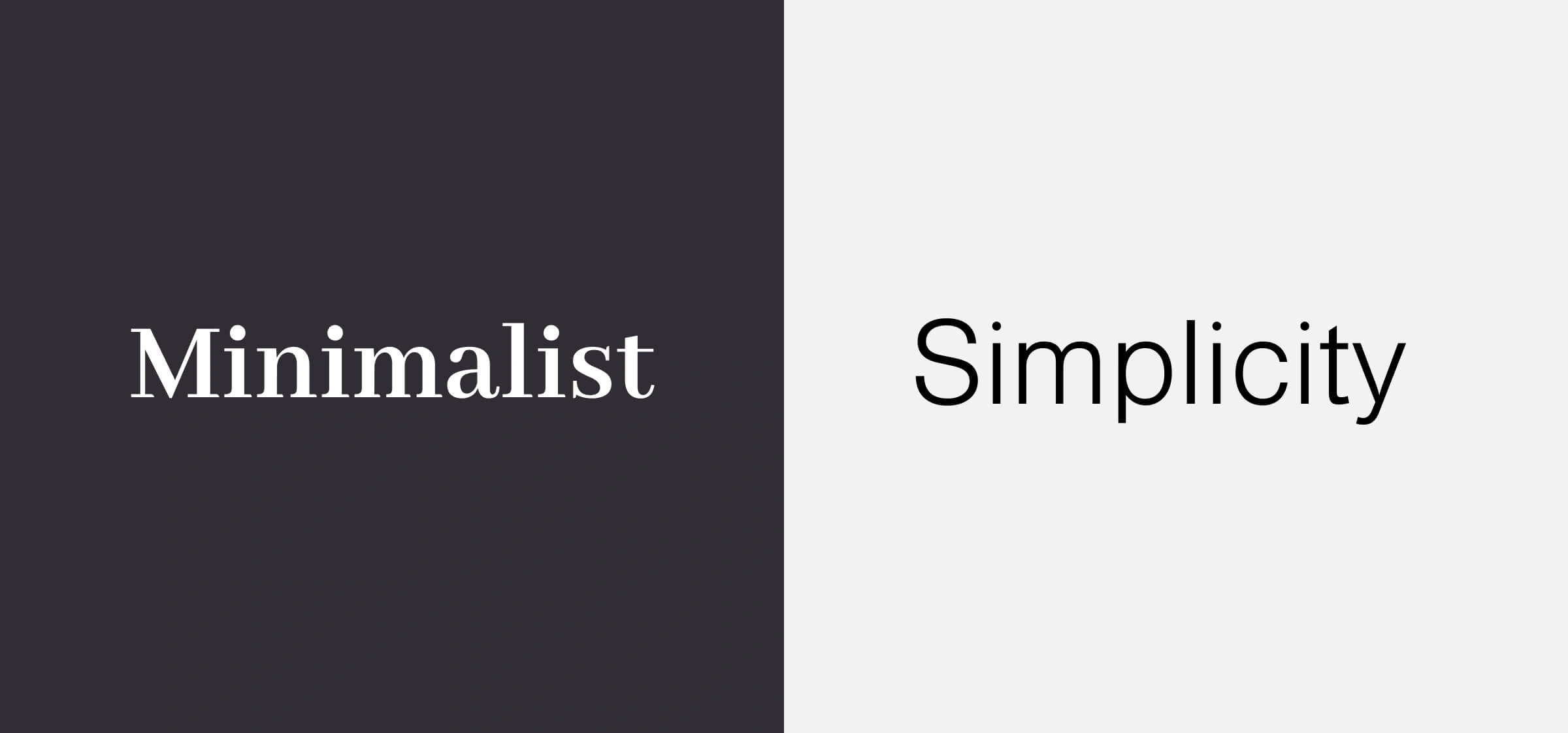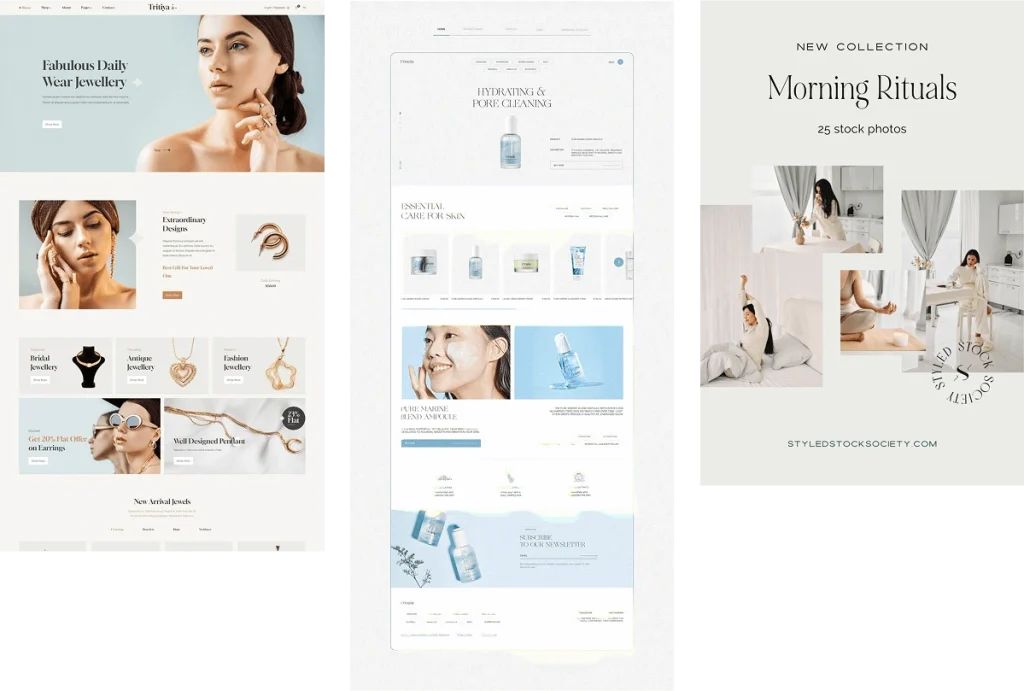Does Your App Design Call for Simplicity or Minimalism?
Minimalism and simplicity have become a focus in the 2025 UI/UX trends due to their ability to address user demand for clarity and functionality in digital experiences. Businesses aim to create smooth user interactions and visually appealing designs, which makes these principles essential strategies.
While they share overlapping values, many designers are often confused between them. Minimalism and simplicity actually have distinct intent, execution, and impact.
In this article, we will walk you through the differences to help you understand these principles better so that every UI/UX designer can apply this to their design.

Minimalistic Design
Minimalistic design is a principle that revolves around “Less is More“, which strongly uplifts the modern design trend: the Clean Look.
It focuses more on removing unnecessary elements that cause clutter. This principle uses a limited colour palette and cleaner typography, with significant whitespace to create a sense of openness and clarity.
Benefits:
- Improved User Experience – A clean and simple interface is easier for users to understand and navigate.
- Faster Load Times – Minimalist designs often have fewer elements, leading to faster loading times.
- Improved aesthetics – The minimalistic design creates an appealing and sophisticated appearance that can improve the interface’s aesthetic appeal. It can also contribute to the design’s sense of unity and consistency.
- Increased Conversion Rates – A minimalist design can help focus users’ attention on key elements, leading to higher conversion rates.
- Enhanced Brand Image – Minimalist designs are often associated with modernity and sophistication, enhancing the brand image.
Simplicity Design
Simplicity design does not have complex elements or navigation. It mainly helps users achieve their tasks and workflows while keeping the interface simple yet attractive.
When it comes to UX design, simplicity refers to creating a design that is easy to use, understand, and navigate. Simply put, the goal of simplicity in UX design is to make the user experience as seamless and enjoyable as possible.
Benefits:
- Better Usability – Simplicity improves usability by making designs easier to use and understand. Users can complete tasks more efficiently, leading to higher satisfaction, longer visits, and increased conversions.
- Increase Engagement – Simple designs are more visually appealing and enjoyable, keeping users engaged and encouraging them to take action.
- Better Performance – Simplicity leads to faster load times, fewer bugs, and smoother performance, enhancing user experience and improving search rankings.
- Reduced Development Time – Simpler designs require less coding and resources, reducing development time and costs.
- Improved Accessibility – By reducing complexity, simplicity makes interfaces more accessible for users with disabilities, leading to a more inclusive experience.
Understanding the Key Differences Between Minimalism and Simplicity
1. Minimalist Design
Minimalistic design works best for websites like jewellery stores, lifestyle blogs, or creative portfolios where looking good and creating a stylish, clean appearance is the main focus.

Minimalistic can also be a great choice for e-commerce websites. While these sites may not always rely on aesthetic and pastel colours, they often focus on having fewer elements, less content, and more whitespace.
One prominent example is the Google search engine. Google avoids using trendy aesthetics like pastel colours (that is often mistaken as the other term for minimalistic) but keeps the interface incredibly “clean” with essential UI components.
Despite the search engine page having minimal elements, it still remains highly informative and user-friendly, making it a perfect example of how minimalism can prioritise functionality while maintaining clarity.
2. Simplicity Design
Unlike minimalistic design, which often prioritises aesthetics, simplicity design is all about functionality and usability. It is not about removing elements but about structuring them in a way that feels intuitive and straightforward.
It’s almost impossible to create an entirely minimalistic app interface like the Google search engine page because apps need to provide enough information for users to navigate effectively. Removing too many elements can make apps frustrating to use, as users depend on clear guidance for tasks and workflows.
An app should guide users with clear instructions, navigation paths, and contextual cues. If an interface lacks these, users may feel lost or unsure of how to proceed.
For example, management dashboards, corporate tools, and product-based apps require well-structured elements like menus, filters, and detailed labels to ensure tasks can be completed efficiently.
Simplicity design is all about structuring information in a way that feels natural and intuitive. The app interface could include collapsible menus, search functions, and clear labels to guide users while maintaining an uncluttered look. This ensures the app is informative without being overwhelming, balancing clarity with usability.
When Minimalism and Simplicity Work Together?
Minimalistic design and simplicity design both have their unique strengths and knowing when to apply each is crucial for achieving the best user experience.
While it is possible to use elements of both in a project, such as combining minimalistic aesthetics with a simplicity-focused user interface, they cannot always be universally implemented across every medium.
Conclusion
In summary, the minimalistic design focuses more on removing unnecessary elements from the interface to achieve elegance and clarity. In other words, a clean look. Simplicity design, on the other hand, aims to simplify complexity by ensuring an intuitive workflow.
Thinking simplicity design refers to minimalism or worse, the aesthetic pastel colour palette trend is an incorrect assumption. Both approaches are valuable and the design application depends on the project goals and audience.
Understanding the subtle differences can help designers prioritise when to use a minimalist approach, simplicity, or even a blend of both!


